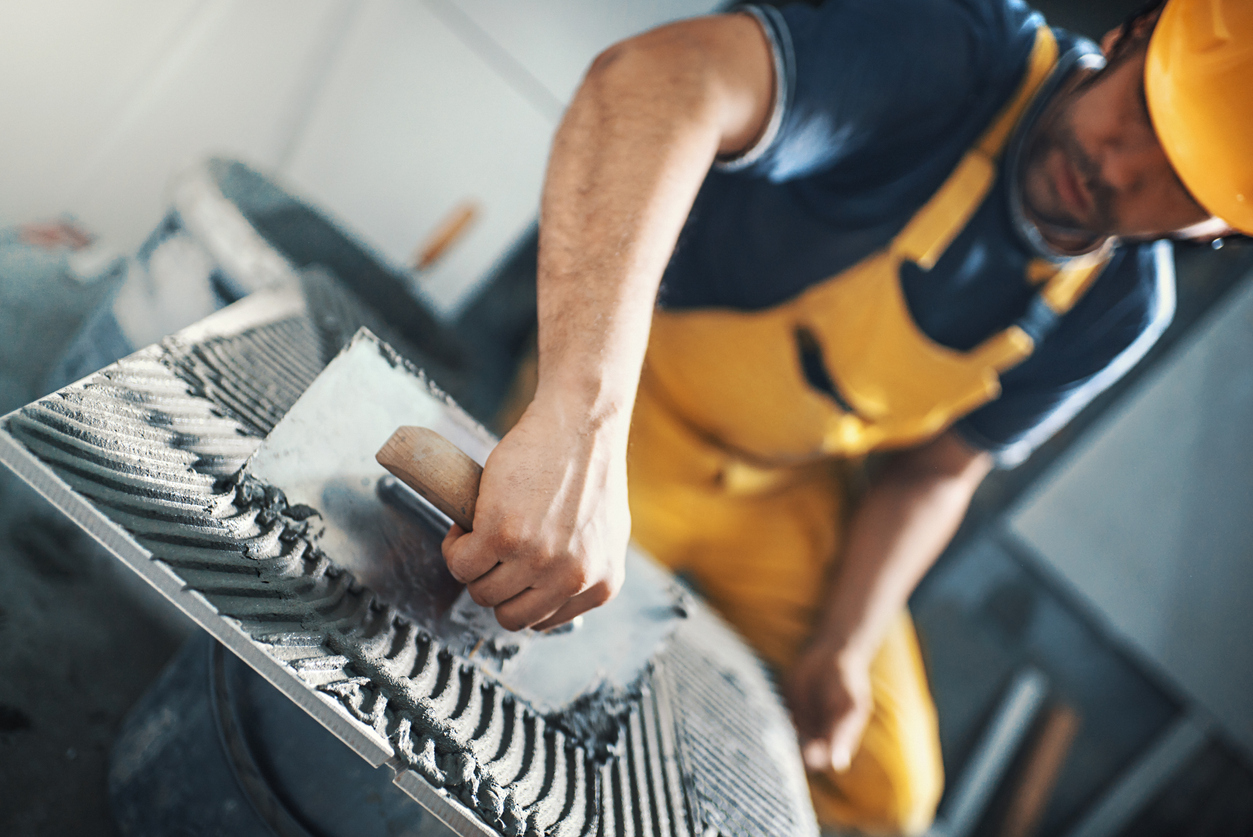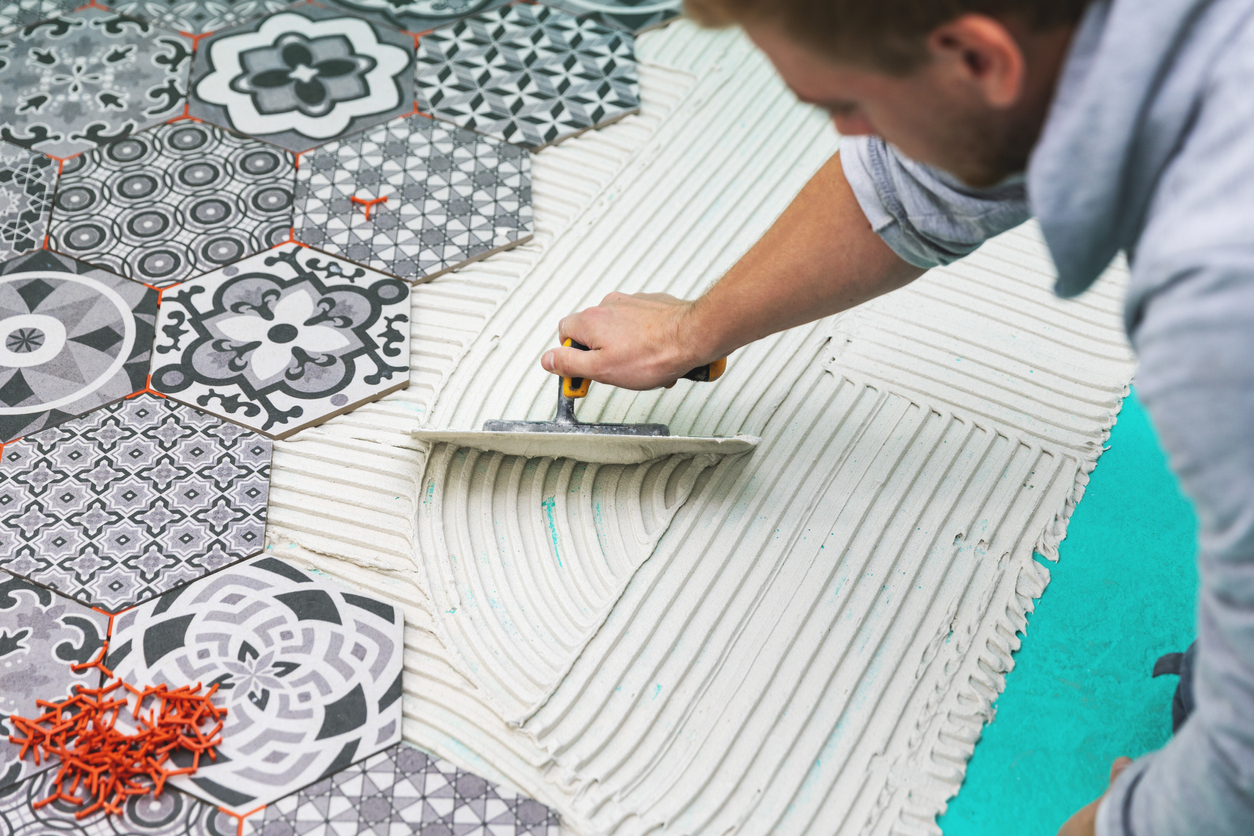If you’re just starting out on a renovation project, you might come across a few unfamiliar terms or methods. You also might not be able to find easy to understand and accurate information to assist you while you learn. Luckily, we’re here to help!
For tile projects, you’ve most likely come across the terms mastic and thinset. But what are they used for? Both mastic and thinset are used during ceramic tile flooring, porcelain and glass tile applications in order to secure the tiles to the ground.—and both have pros and cons. To learn more about the differences between these two adhesives, and which one would be best for you, continue reading.
What’s the Difference Between Mastic and Thinset?
Thinset, sometimes referred to as mortar, is made of cement, fine sand and some kind of water-retaining element. It helps ensure that your tiles stick to both walls and floors. You can typically find thinset in two different forms: modified and unmodified.
Unmodified thinset is the most basic form of thinset and has no added ingredients. You just mix it with water and apply. Unmodified thinset is sometimes seen as oldschool, as it was used by professionals for years before more modern advancements. Experts will often still use unmodified thinset because they know how to work with it and the practice has been passed down. This version of thinset can be tricky to work with, and you’ll need to use more of it than other versions in order for your tiles to stick. Modified thinset is plumped up with dry polymers (latex) which means you can apply less and still achieve a strong hold. It’s great for DIY projects and you don’t have to worry about mixing anything together.
Mastic is basically tile glue. Historically, mastic was made from an organic resin, but today, the word is used to describe any tile glue or adhesive that doesn’t use the cement, sand, and latex mixture found in thinset. Any tile adhesive that describes itself as “fast-grabbing” or anti-sag will be a mastic.
Thinset Pros & Cons
Thinset is very popular and many professionals will use unmodified thinset in their applications because they’ve been using it for so long or were taught this method. It’s also inexpensive and easy to find. Thinset can be used in wet or very damp areas without any cause for concern, like showers, bathroom floor tiles, and kitchens. You can find thinset in gray or white, which is great if you’re looking to install translucent tiles.
If you’re not sure if you should choose between modified or unmodified thinset, it’s best to speak to an expert who can guide you, as each job is unique. Modified thinset might seem like the best way to go, as there’s no mixing involved and it’s easier to work with, but each comes in its own grade. The retention product added to the mix of modified thinset and the ratio used might need to be more or less, depending on the application.
In terms of cons, thinset doesn’t dry quickly which can lead to sagging. Consider this if you’re thinking about vertical applications. Shower floor tiles will not have this problem, but consider this when planning backsplashes or shower wall tiles. In that case, you might want help from a professional tile layer. Also, if you decide to renovate or sell your home years later, thinset requires a lot of muscle to remove.
Mastic Pros & Cons
Mastic differs from thinset in one major way: it cannot be used in very wet or high-moisture places. Bathroom and kitchen backsplashes are usually fine, but you’ll mainly find mastic used in applications like wainscots, kitchen walls or any wall that is consistently dry.
Mastic is also incredibly sticky, so unlike thinset, you don’t have to wait very long for it to set. This is both a pro and a con! You don’t have to wait a super long time for your tiles to set, but if you set a tile down incorrectly, mastic is not very forgiving. Additionally, if you’re sensitive to smells, mastic might not be for you since it does have a fairly pronounced odor. Lastly, it can be easy to remove tile that is stuck on with mastic, which helps if your future plans change.
The Best Adhesive for Floors and Backsplashes
Both mastic and thinset are great adhesives, but they’re best for very specific applications. If you’re using ceramic tile for your bathroom floor, maybe look into thinset. But if you’re applying tile vertically and in a dry, not-so-damp place, mastic might be your best bet.
If you still have questions about which adhesive to use or how to use it if you’re doing a DIY project, reach out to one of our professionals today. We’ll be happy to offer any advice and direction.


